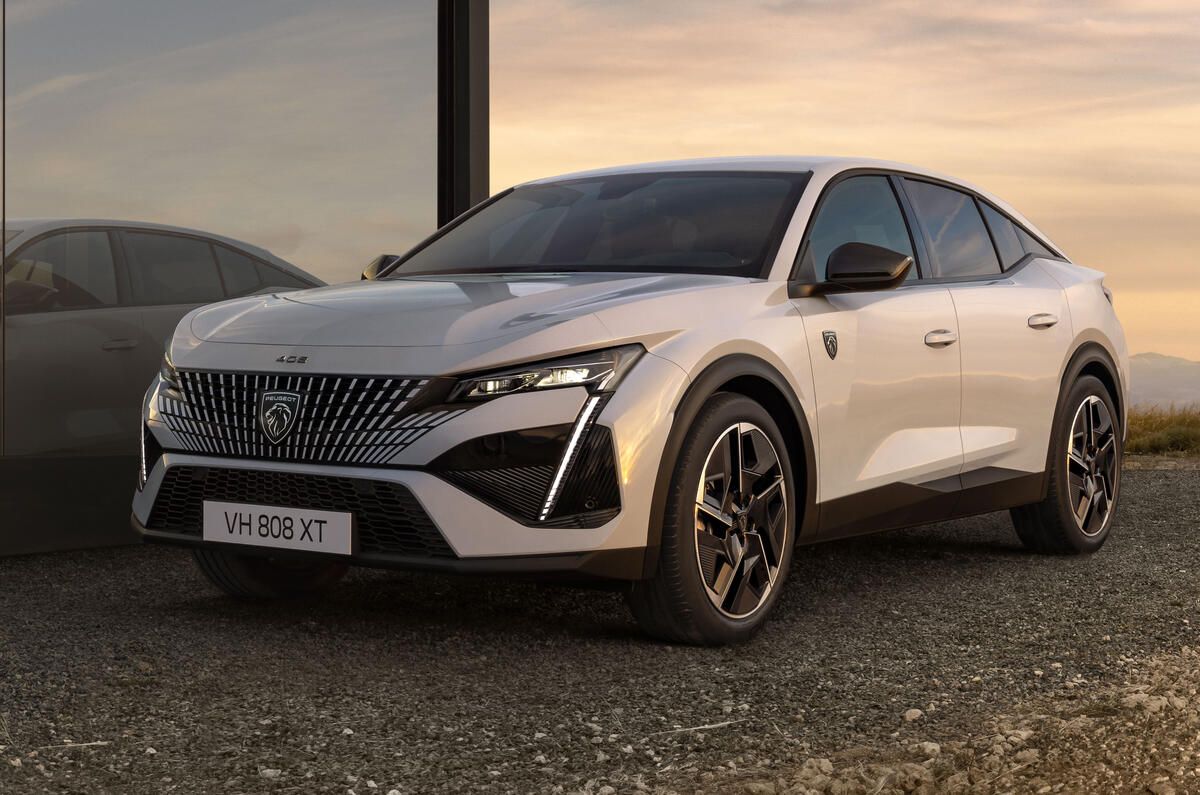Order books have opened for the Peugeot e-408, the new electric version of the brand's saloon-esque hatchback that rivals the Polestar 2 and Tesla Model 3.
It's available in two trim levels, with the entry-level Allure car priced from £42,175, while the GT range-topper is £44,945.
Its addition means every car in Peugeot’s UK line-up now offers a choice of petrol, hybrid and electric powertrains.
Although closely related to the Peugeot e-308 hatchback, the larger e-408 adopts a slightly different powertrain, notably drawing power from a larger 58.2kWh (usable) NMC battery – unique within the Stellantis group.
The bigger battery could be accommodated as engineers “had more room to play with” within the fastback’s longer wheelbase, explained Peugeot product director Jérôme Micheron.
The rakish 408's slippery design, which achieves a drag coefficient of 0.28 (on par with the 2 and only just beaten by the class-leading Model 3), helps the EV to achieve a range of 281 miles, with 4.6mpkWh efficiency.
The battery can be charged at rates of up to 120kW.
Despite being able to accomodate it, Peugeot isn’t offering the e-408 with the 98kWh battery that has just been launched in the Peugeot e-3008 and Peugeot e-5008 (which offer up to 422 miles of range).
Asked why, Micheron said: "When we looked at the competition of the e-408, we saw we were the right position when it came to range and efficiency. The average daily C-segment customer drives 45km [28 miles] a day.”

The new Peugeot’s Polestar and Tesla rivals are both offered in 'Long Range' forms, with ranges of 408 and 390 miles respectively.
The e-408 is fitted with the same synchronous electric motor as the e-3008, which deploys 207bhp and 245lb ft of torque.
Official acceleration figures have yet to be released, but it's expected to outpace the 154bhp e-308’s 9.8sec 0-62mph sprint time.
The e-408 is nearly indistinguishable from its ICE siblings, with only the additional 'e' badge at the rear marking it out. This is because “we wanted to protect the design and its attractiveness", said Micheron.
The same is true inside, the e-408 having the same i-Cockpit (small steering wheel and raised 10in instrument panel) as the ICE 408, along with a 10in infotainment screen, wireless Apple CarPlay and Android Auto and a separate i-Toggle shortcut touchscreen.
Deliveries are due to begin early next year.















Join the debate
Add your comment
This does not compete with the Polestar 2 or Model 3. Let's be frank, it has a 200HP single front motor powered by a tiny 56kWh battery pack. That's barely larger than what you can get in a new electric MINI. It's smaller than the standard range battery pack in a Model 3, or the larger packs in entry level EVs like the Hyundai Kona or Kia Niro. What a terrible new offering. Not one of Stellantis's new EVs is the least bit competitive. Terribly slow charging speeds, poor real world efficiency, obese weight, all are underpowered and a majority are front wheel drive (which doesn't work well in an electric vehicle due to the more 50/50 weight distribution and instant torque). They are so far behind the competition it's not even funny. This is a cheap economy hatchback with an electric powertrain. It's not worth £44K+++.
It's priced £10,000 too high, and will likely sell in tiny numbers. Why anyone would pay this much for this car when they could get a long range version of a Model 3, EV6, Model Y, Ioniq 5, etc. for similar money is a mystery to me. I also hope Peugeot finally kills the dumb i-cockpit design in their next gen models. Why design something intentionally to obscure part of the gauge cluster? A normal instrument panel and normal sized steering wheel are preferred by the majority of the car buying community. I would much rather see them put a 308 GTI back into production than a bunch of these half baked compliance cars
This model should have launched with an 80-85kWh battery pack that could charge at no less than 200kW and deliver the 10-80% charge in under 25 mins. It also should have been rear driven in base form with around 250-300HP while a dual motor AWD with 350-400HP served as the upgrade option. Those specs would at least get this model in the ballpark of the rest of the cars they hope to compete against.
"Did you know that ...?"."No, tell me!". "This mighty Lion de Belfort ranks Top 10 in Turkey!". "So, it sells 48 units per month?". "Not quite. Correct # is 1.408. Double the amount of France, 3x that of China, 4x that of Germany". "Nice to know, thx"
Good looking in and out but a sub 40k price would have put it toe to toe with the Tesla, that and not having a dedicated EV chassis puts it on the fence of success or also ran.